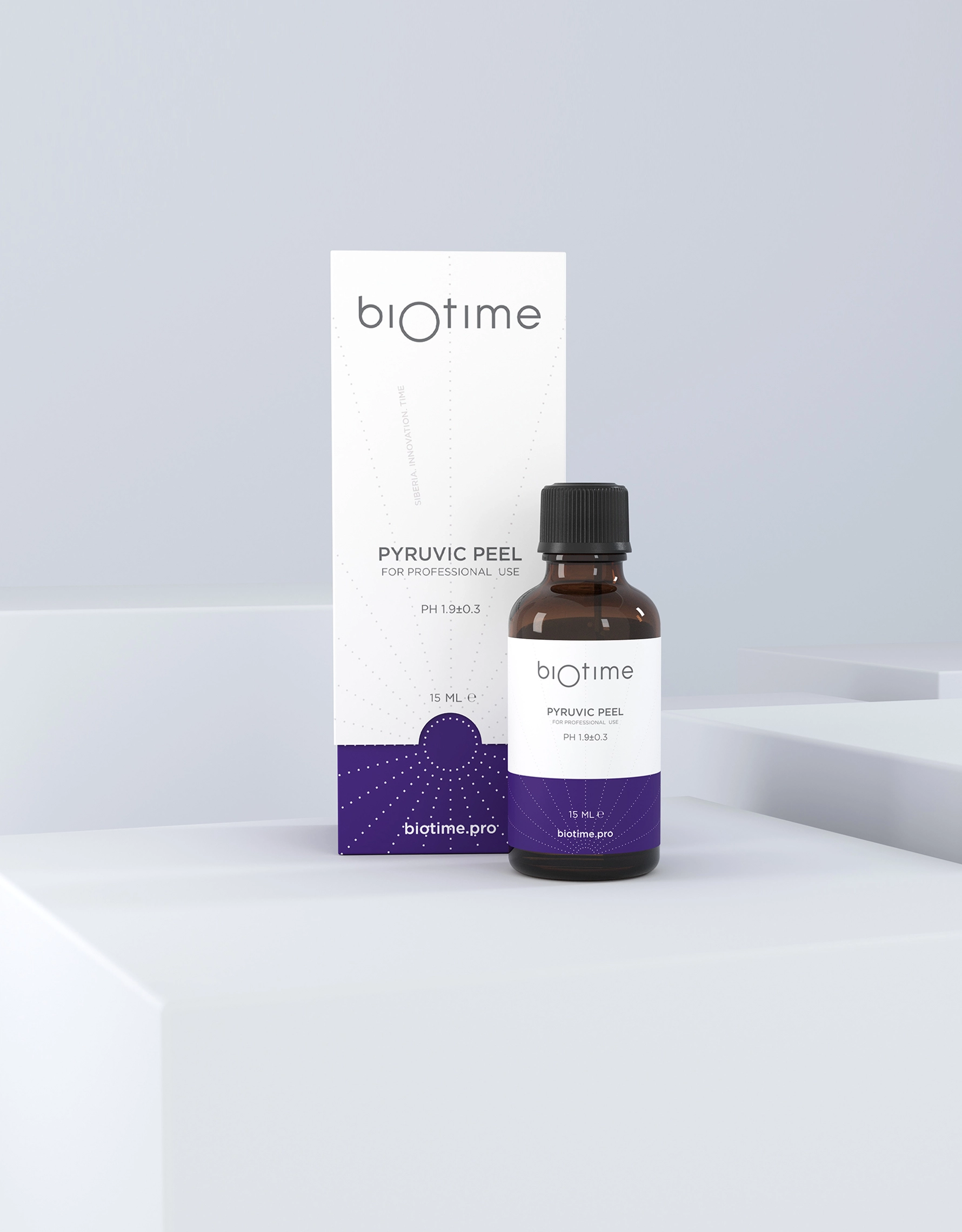
BIOTIME PYRUVIC PEEL
Pyruvine peeling
Release form
- Dropper bottle 15 ml
Purpose
- thin, dry, dehydrated skin;
- fine wrinkled and tired type of aging;
- comedonal form of acne;
- small wrinkles ("pouch");
- hyperpigmentation;
- signs of photo- and chronoaging.
Advantages
- The complex of active ingredients has a regenerating, rejuvenating and moisturizing effect.
- Stimulates the production of components of the intercellular matrix of the skin - collagen, elastin, glycoproteins.
- Improves trophism, tissue microcirculation and complexion.
- Enhances the proliferation of keratinocytes.
- Reduces the appearance of fine wrinkles and dermal creases.
- Can be used as an enhancer (substrate) for retinol peeling.
Operating principle
PYRUVIC ACID 40%
It has a keratolytic, antimicrobial and sebostatic effect, and is also able to stimulate the formation of new collagen, elastic fibers and glycoproteins. When applied to the skin, pyruvic acid partially undergoes hydrolysis and turns into lactic acid, which has a powerful moisturizing effect. Due to its low molecular weight and pH (about 1.7), PYRUVIC PEEL can be used as an enhancer (substrate) for retinol peeling.
LACTIC ACID 5%
It is part of the natural moisturizing factor (NMF), stimulates the production of glycosaminoglycans, collagen, elastin. It has a slight anti-inflammatory, immunostimulating and vasoconstrictive effect.
Precautionary measures
- Avoid contact with the eyes of the means used for the procedure, in case of contact with the eyes, immediately rinse with plenty of water.
- Do not apply peeling to damaged areas of the skin.
- Before use, test for sensitivity on the elbow.
- During the period of active peeling, it is unacceptable to forcibly remove the crusts and films that have appeared.
- After the procedure and during the entire post-peeling period, avoid prolonged exposure to the sun, be sure to use UV protective agents.
Contraindications
- Individual intolerance to peeling components.
- Violation of the integrity of the skin.
- Active inflammatory process on the skin.
- Herpes in the active phase.
- Pregnancy and lactation.
- IV - V skin types according to Fitzpatrick.
- Chronic dermatoses in the acute stage.
- Couperose.
- Rosacea.
Compound
- Pyruvic acid 40%
- Lactic acid 5%
- Propylene glycol
- Glycerol